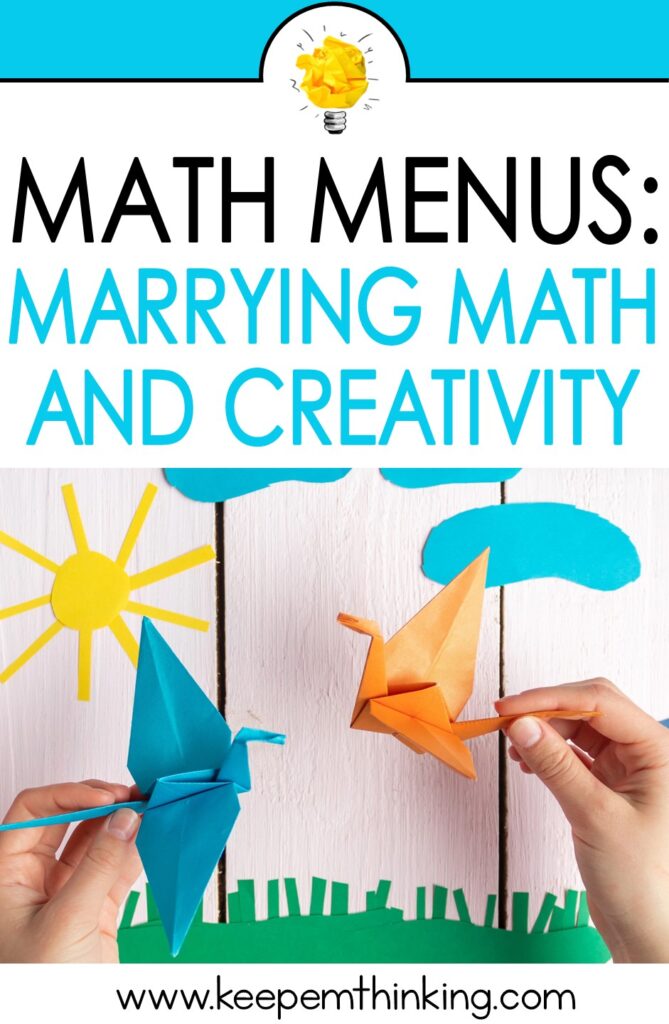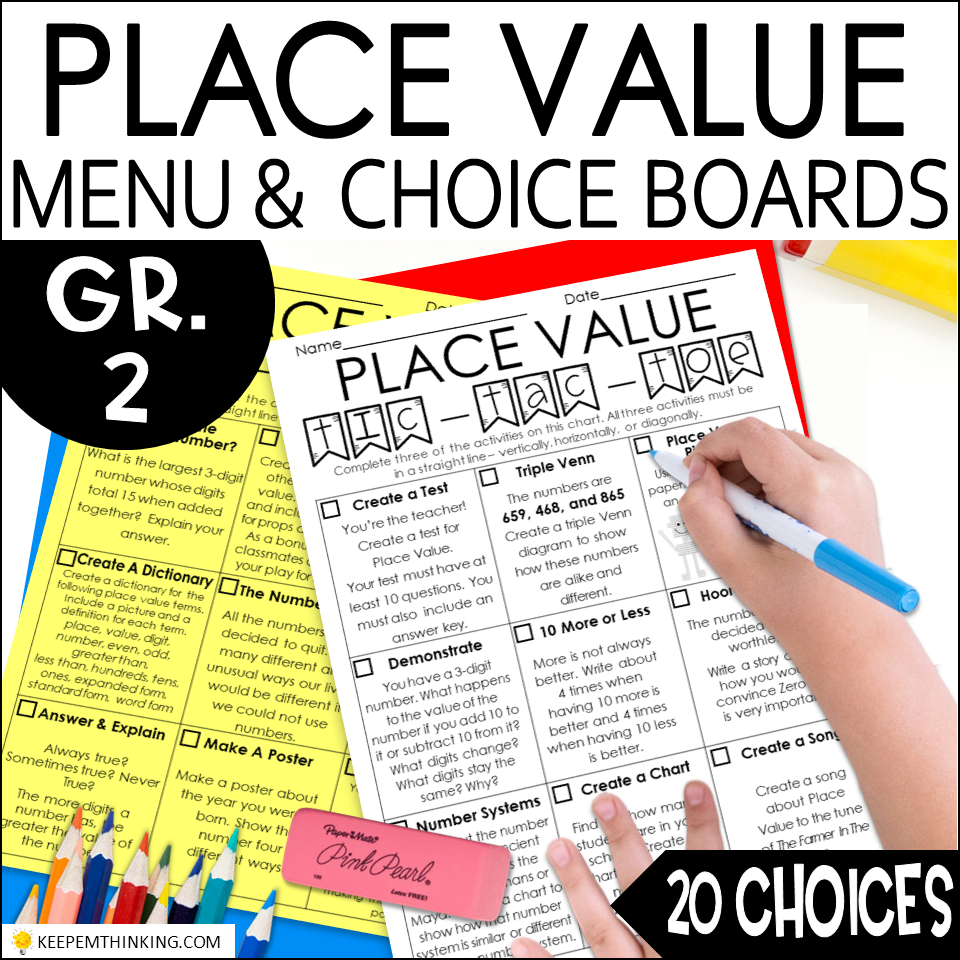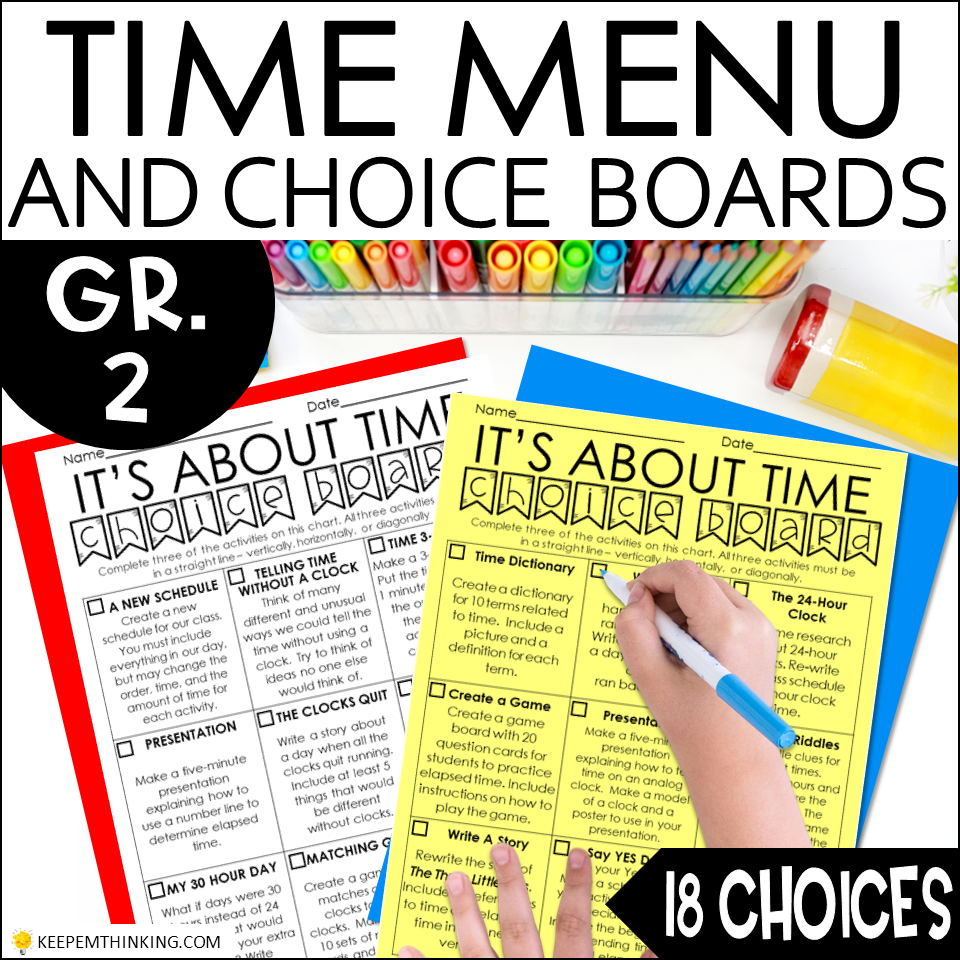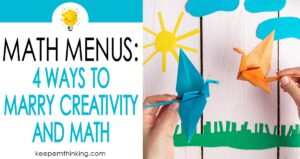Unleash the magic of math and boost creativity with math menus! Get ready to learn about math menus and how they can spark your students’ imaginations. You’ll also learn how to use these menus to help students love math and get their creative juices flowing.
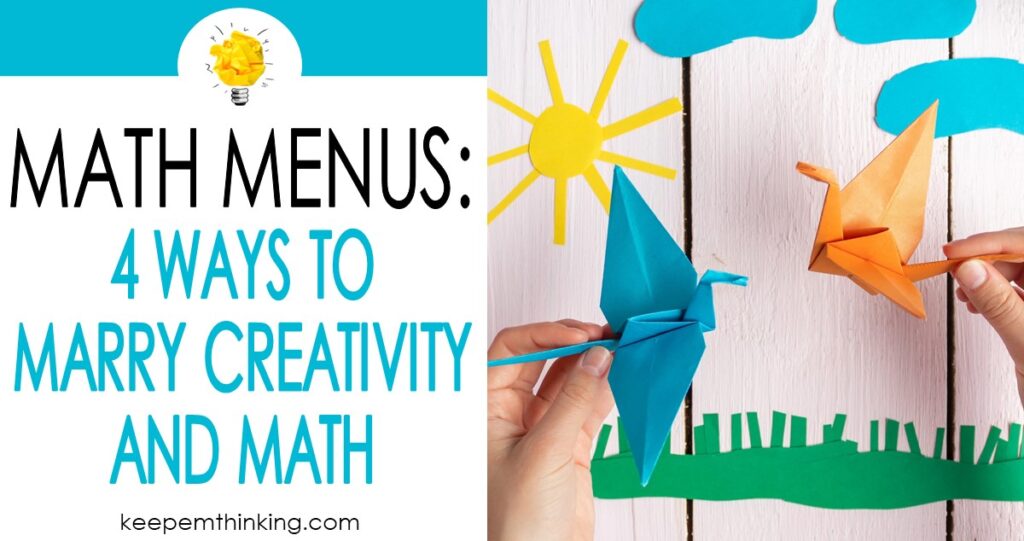
Math menus are a valuable teaching strategy that can foster students’ love for mathematics and ignite their imagination. They provide engaging and creative activities designed around students’ interests and learning styles. These menus allow students to explore mathematical concepts in a non-traditional way, breaking away from the confines of the textbook.

The Link Between Math and Creativity

Contrary to popular belief, math is not just a study of numbers and rigid formulas. It’s rich with opportunities for creative exploration and innovative thinking. Creativity in math is about finding novel ways to approach problems, making unexpected connections, and seeing beyond the conventional methods. It’s about understanding that there isn’t always one right answer to a problem.
Research indicates that creativity is as crucial in learning mathematics as it is in the arts. In mathematics, the creative process involves generating ideas, finding patterns, making connections, and thinking abstractly. These processes are essential for deep understanding and problem-solving.
By offering a variety of tasks that cater to different thinking styles and interests, math menus allow students to approach mathematical concepts in innovative ways. Whether it’s through designing a math-based game, creating a budget for a kids’ Yes Day, or writing a mathematical fairy tale, math menus open the door to a more imaginative and engaging approach to math instruction.

Understanding Math Menus
Math menus are a collection of thoughtfully designed activities presented in formats that offer students choices in their learning process. Imagine a menu in a restaurant, but instead of appetizers, main dishes, side dishes, and desserts, there are various math activities tailored to different learning styles and skill levels.
These menus can take various forms, such as tic-tac-toe boards, choice boards, or even themed lists. The key is that the activities offer students unique and creative ways to engage with mathematical concepts.
Tic-Tac-Toe Boards
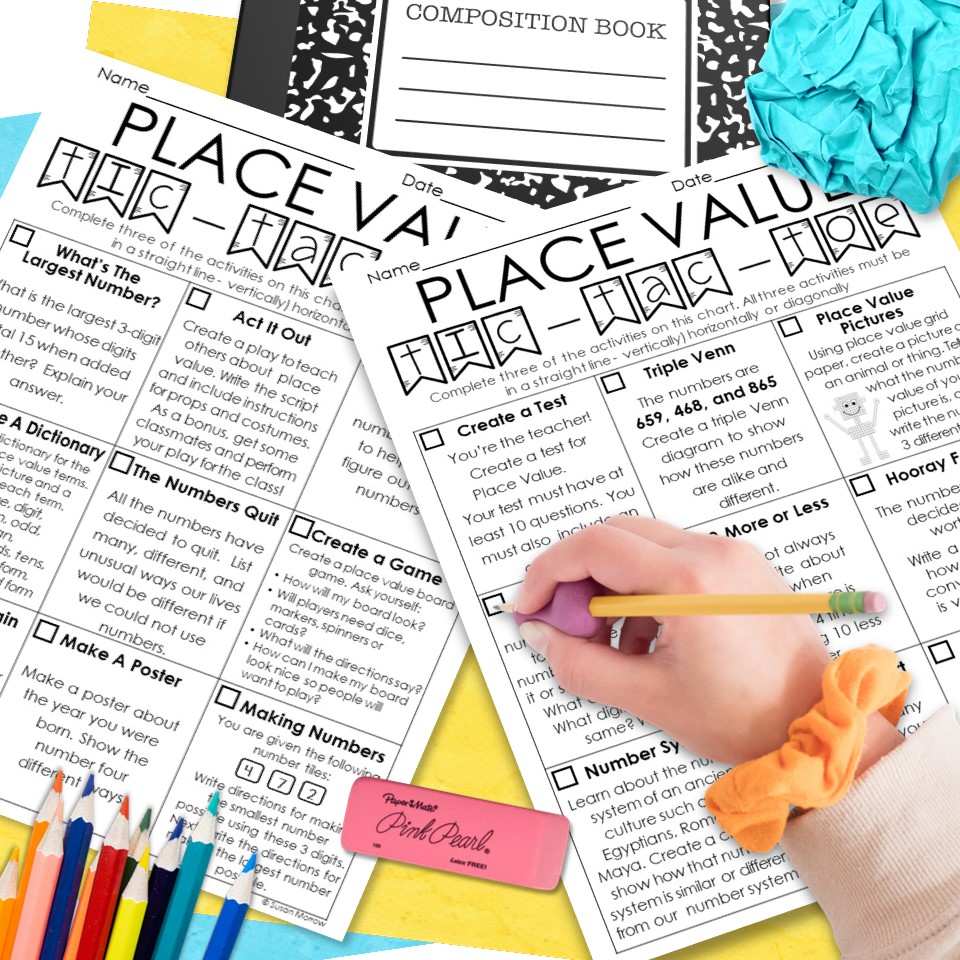
Tic-Tac-Toe boards are the most common type of math menu. They include a grid of nine activities. Each square offers a specific task, making choices manageable and clear. Students can create a variety of math menu products, but they must select 3 tasks in a row, column, or diagonal line.
The format of a tic-tac-toe board balances giving students choices and maintaining a structured approach to learning. Tic-tac-toe boards allow students to explore a range of concepts and skills. They can be easily differentiated by varying the complexity of tasks within the grid.
Appetizer, Main Course, Side Dish, Dessert” Math Menu
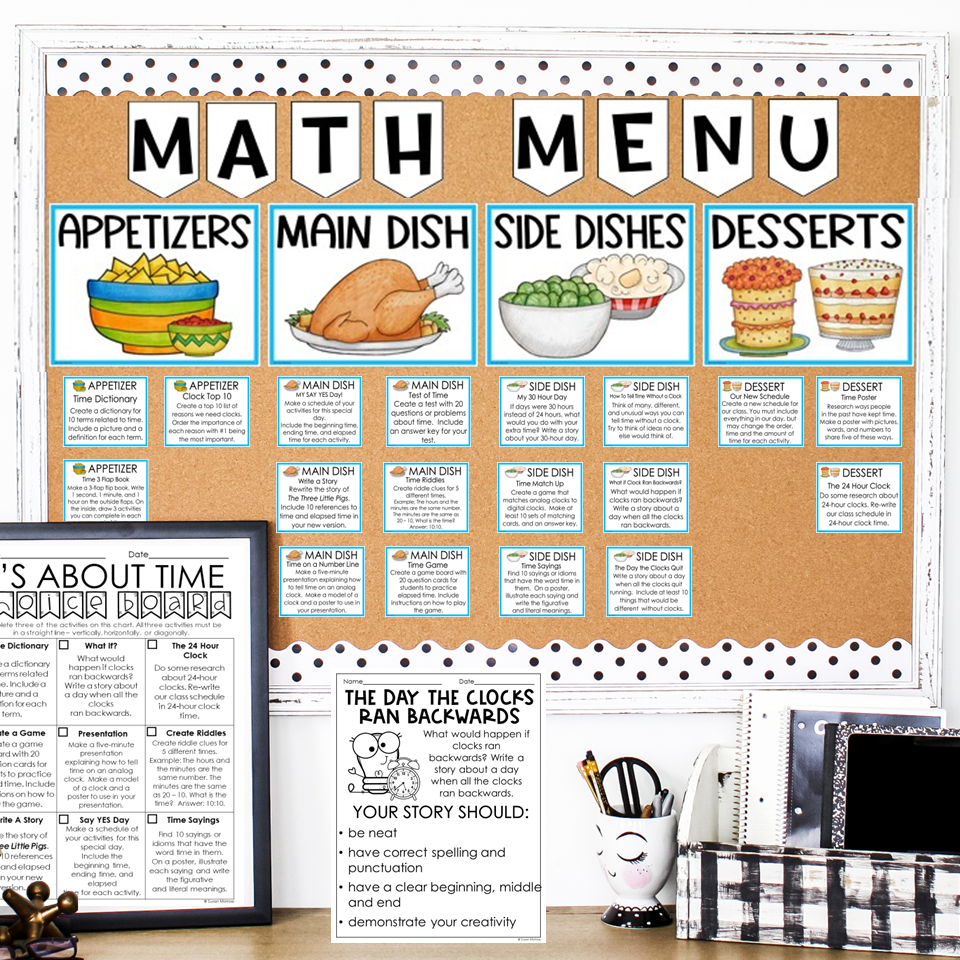
This type of math menu is centered around the concept of a meal. The menu is divided into sections labeled as Appetizers, Main Course, Side Dishes, and Desserts. Each section represents a different category or level of activity. Teachers can display this type of menu on a bulletin board with cards under each category or present it on a single-page handout.
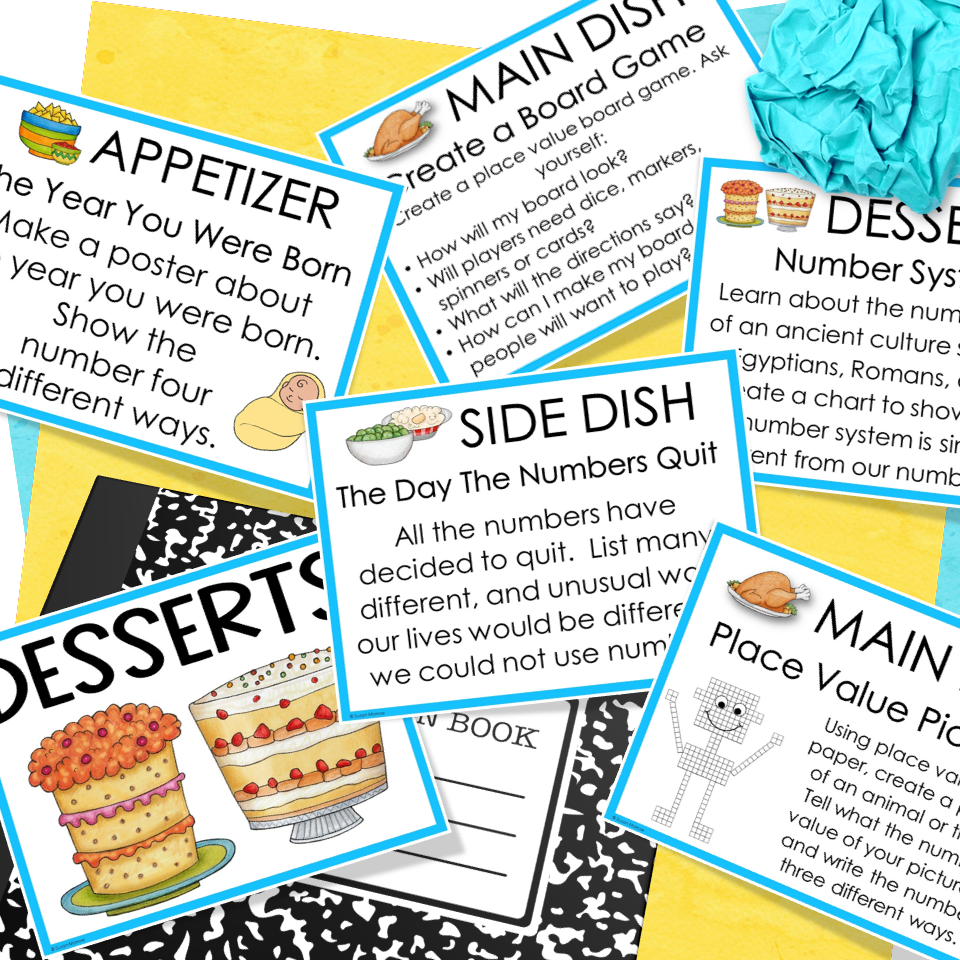
Choice Menu Categories
Appetizers – They’re quick activities to warm up students’ minds and introduce the lesson’s main concepts. They are designed to be engaging and quick, serving as an introduction to the topic.
Main Course – These activities are the core of the learning experience. These tasks are more comprehensive and require a deeper understanding of the mathematical concepts. They are usually more challenging and detailed, providing substantial engagement with the lesson’s objectives.
Side Dishes – These activities complement the Main Course activities and offer additional practice, or explore different aspects of the main concept. They often provide alternative approaches or applications of the concept.
Desserts – These are typically creative, enjoyable activities that the students really look forward to. They involve real-world applications, projects, or even games. These activities are designed to consolidate what the students have learned in a fun way.

Flexibility in choice is a significant feature of this type of math menu. Students can choose activities based on their interests and skill levels. This allows for differentiation in the classroom, catering to the unique learning needs of each student. Such personalized learning paths are instrumental in keeping students engaged and motivated.
Adding creative tasks in the Desserts section adds an element of creativity and application to the learning process. These tasks encourage students to apply their mathematical knowledge in new and imaginative ways, going beyond traditional problem-solving.
Choice Boards:
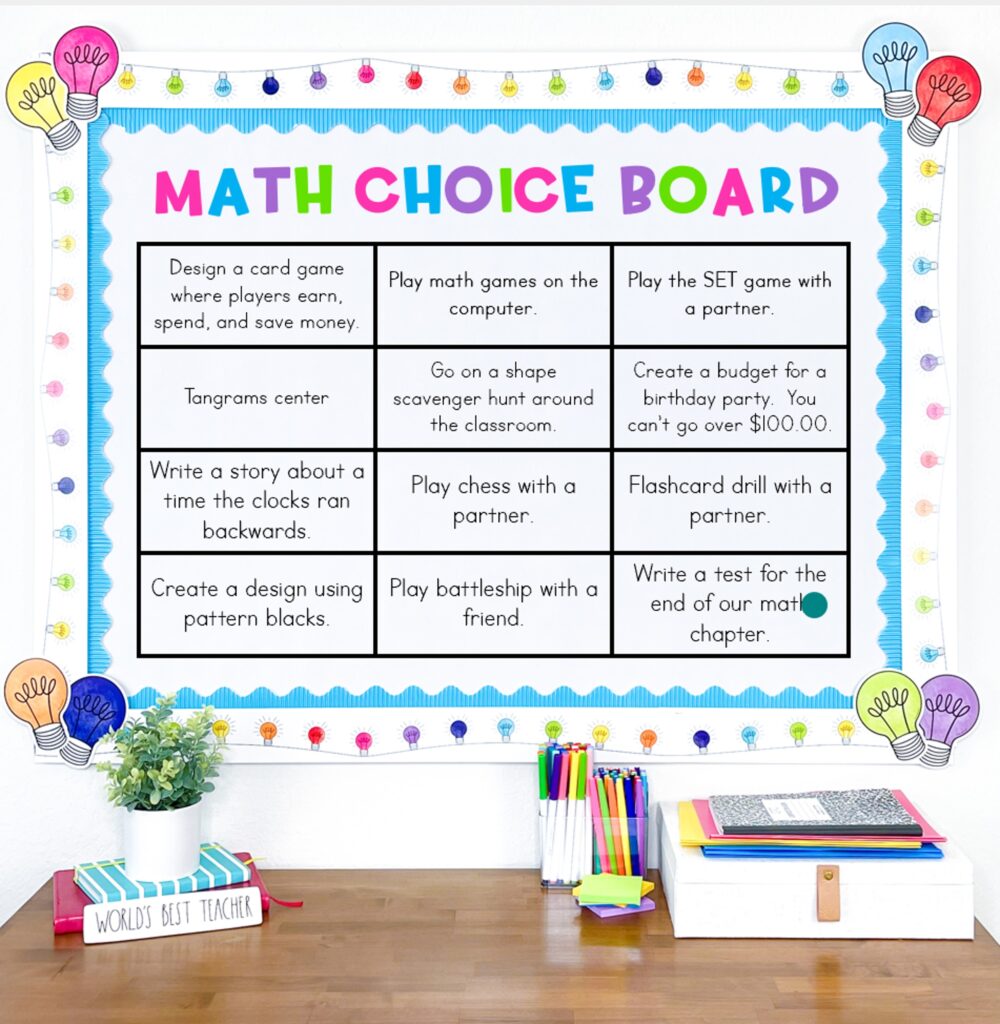
Choice Boards are similar to tie-tac-toe boards but provide a wider range of options. Students can pick a certain number of activities from a larger list, which makes learning more personalized. Tic-tac-toe boards limit students to diagonal, vertical, or horizontal lines, but choice boards let students choose any activities they want. This freedom of choice makes students more engaged and motivated to learn.
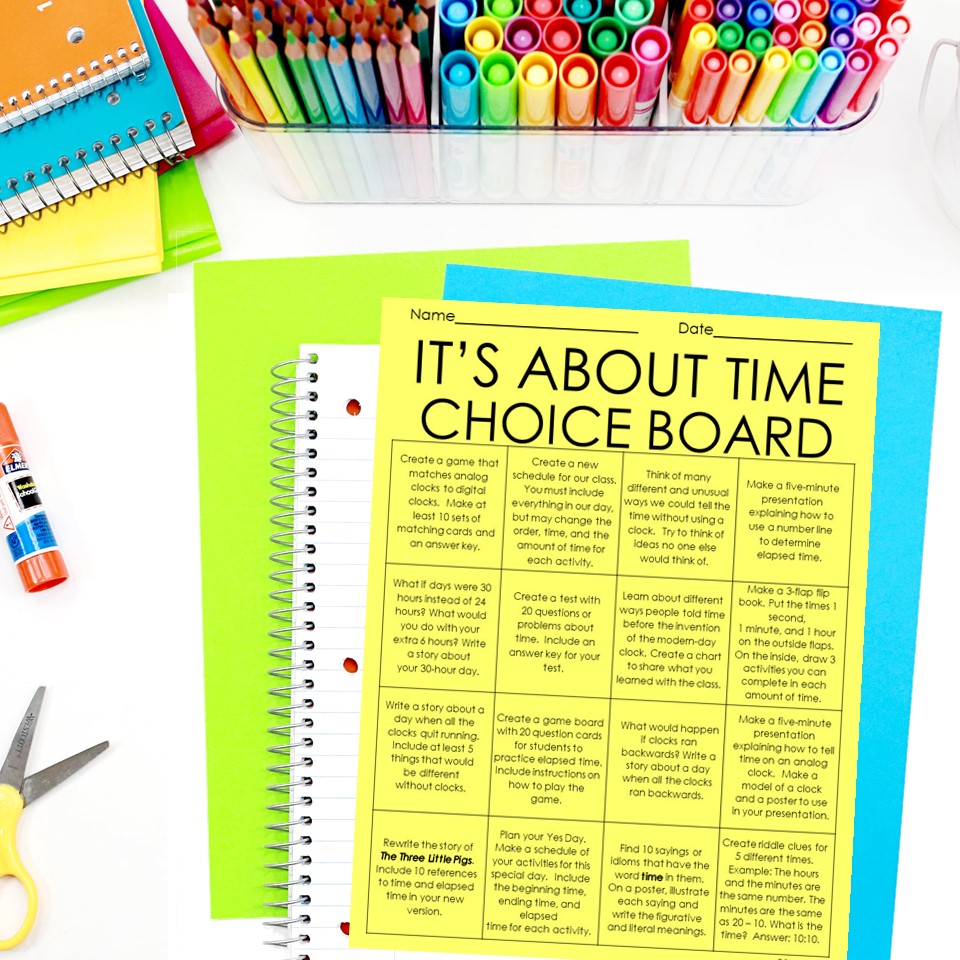
The Early Finisher Board is a great tool for the classroom. It reminds students of what they can do after they finish their work. It encourages independence, creativity, and critical thinking. The board provides a variety of options such as puzzles, art projects, reading, brain teasers, games, writing projects, STEM challenges, and personal passion projects. It helps students take charge of their learning and use their extra time wisely.

Themed Lists
Themed Lists are great for diving deep into a math topic since they focus on a specific theme or concept. They often incorporate other disciplines, such as writing and art, with mathematics. Students will complete a variety of activities that allow them to explore the topic from different angles.
I will create a themed list on the computer and have it printed out poster size to display in the room, or I can give each student a copy.
Customization and Flexibility
There are multiple math menu types available that offer unique benefits. Each type of math menu has its unique strengths, and the choice of which to use depends on the specific learning goals of the lesson or the interests of the students. These menus are versatile tools that can help enhance creativity and engagement in math education. Educators can choose the most suitable type depending on their specific educational goals and the needs of their students by understanding the strengths of each menu type.

Implementing Math Menus in the Classroom
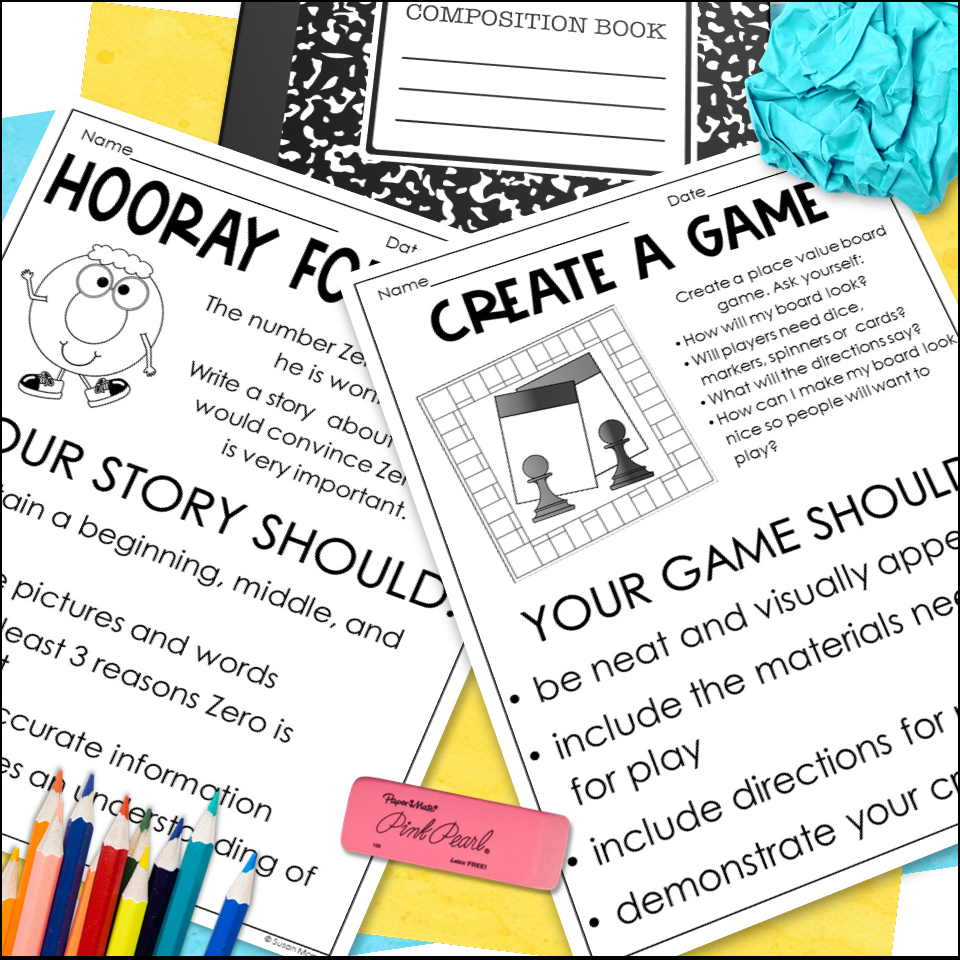
No matter which type of math menu you use in your classroom, you follow the same steps to create them.
- Decide on the learning objectives – what you want the students to learn or practice in math. It could be anything from basic math to more complicated algebra, depending on your grade.
- Create the Activities: Design a range of activities that accommodate different learning styles and levels of difficulty. Make sure each activity matches your learning goals. Activities can range from problem-solving tasks, creative projects, and real-world scenarios to analytical puzzles.
- Choose the type of math menu that best suits your classroom needs – be it tic-tac-toe boards, choice boards, or themed lists. Organize the activities in a clear, visually appealing format.
- Let students pick activities they like, but still make sure they’re challenged and interested. Provide options for students to work individually, in pairs, or in groups, depending on the nature of the activity.
- Make sure students know what they’re supposed to do and what’s expected of them. This helps students maintain focus and ensures that the learning objectives are met.

Benefits of Math Menus
Math menus are a game-changer for getting students engaged and motivated. Students are more invested in the learning process when they can choose activities that resonate with their interests and learning styles. This choice empowers them, making learning more enjoyable and meaningful.
Fostering Creativity and Critical Thinking
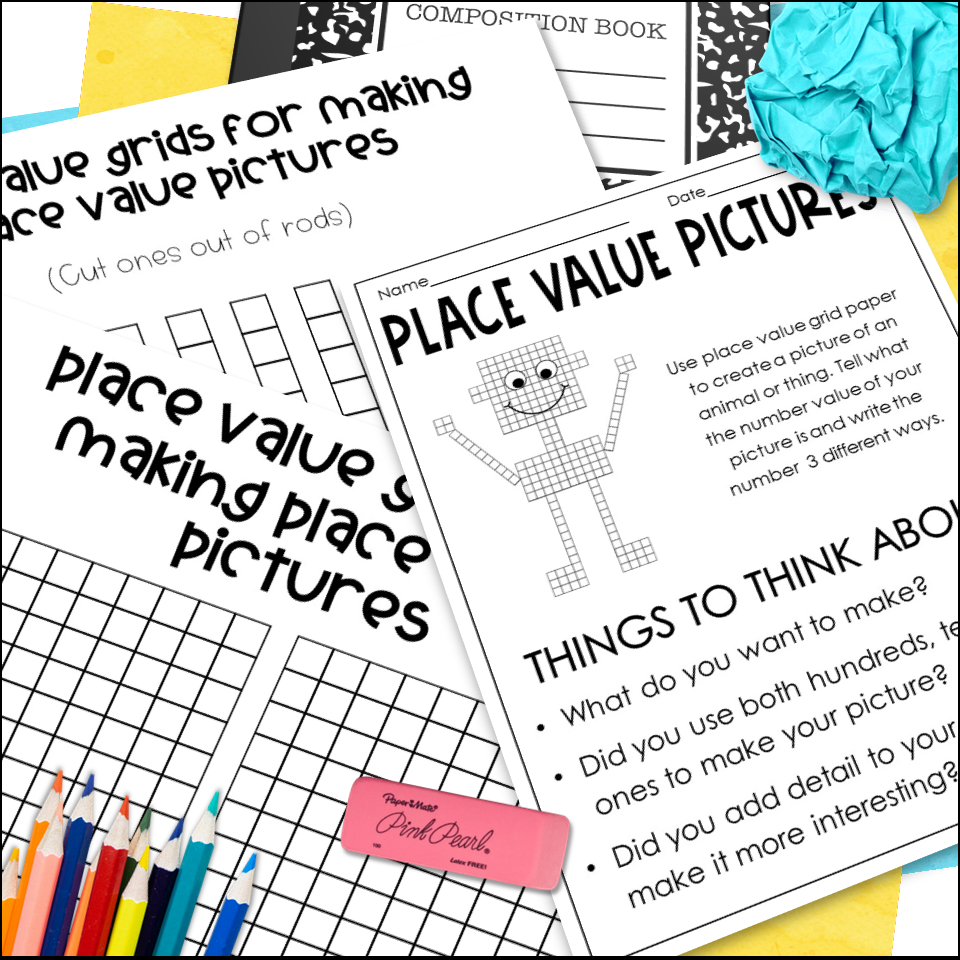
Math menus encourage students to approach problems creatively. They are challenged to think outside the box, apply concepts in new ways, and explore multiple solutions to a given problem. It boosts their creative thinking and sharpens their critical thinking.
Building Confidence and Independence
By tackling diverse challenges and exploring mathematical concepts through different lenses, students build confidence in their abilities. They learn to trust their problem-solving skills and become more independent learners.
Developing a Range of Skills
Math menus help students develop more than just math skills – they also learn collaboration, communication, and time management. When working on menu activities, especially in groups, students learn to communicate their ideas, work together towards common goals, and manage their time effectively.

Challenges and Solutions When Implementing Math Menus
While math menus offer numerous benefits, you may encounter certain challenges in implementing them effectively. Here are a few tips to help you incorporate math menus into your instructional time.
- It’s a challenge to offer a range of math activities when we have limited resources. Use the internet and connect with other teachers to share ideas and resources. You can also encourage students to use everyday items for hands-on activities.
- Mix it up with activities that cater to different abilities and ways of learning. Regularly assess student needs and adjust the menu accordingly.
- Students may feel overwhelmed by the number of choices or open-ended tasks, so it is important to start with fewer options and gradually increase the number and complexity of the tasks as students become more comfortable with the format.
- Regularly ask students for feedback to help you understand their needs and preferences.
- Stay flexible. Be ready to switch things up depending on how the students are doing. Keep in mind that trial and error is a normal part of learning, for both the students and you.

Click on each of the images below to see the math menus in my Teachers Pay Teachers store.
Other Blog Posts You Might Be Interested In:
How to Use Low Floor High Ceiling Math Tasks
The Importance of Providing Choice in Your Classroom
Fun and Engaging Ways to Teach Money
Pin For Later:
